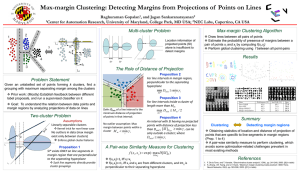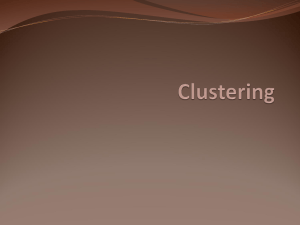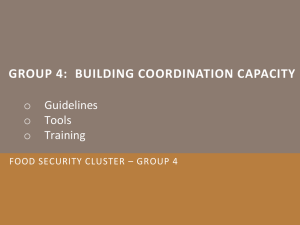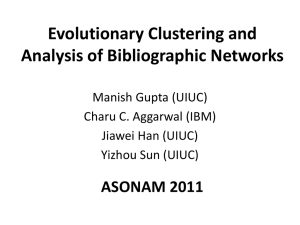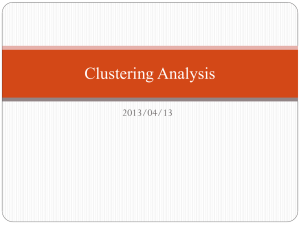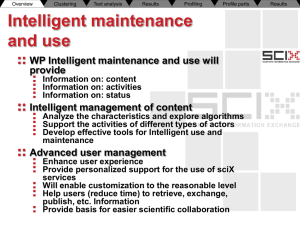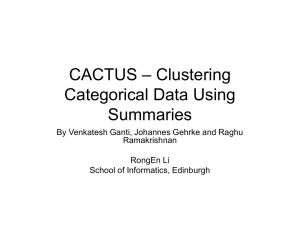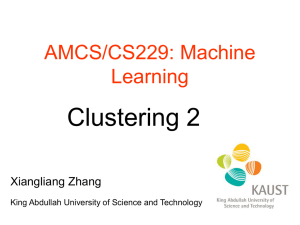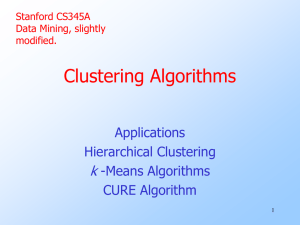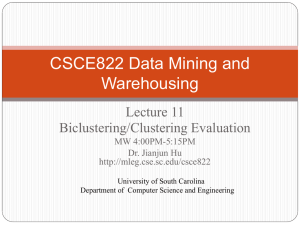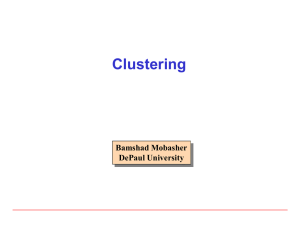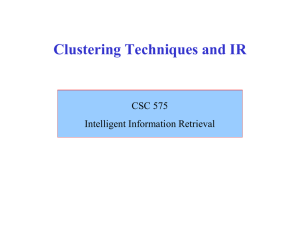CURE: An Efficient Clustering Algorithm for
advertisement
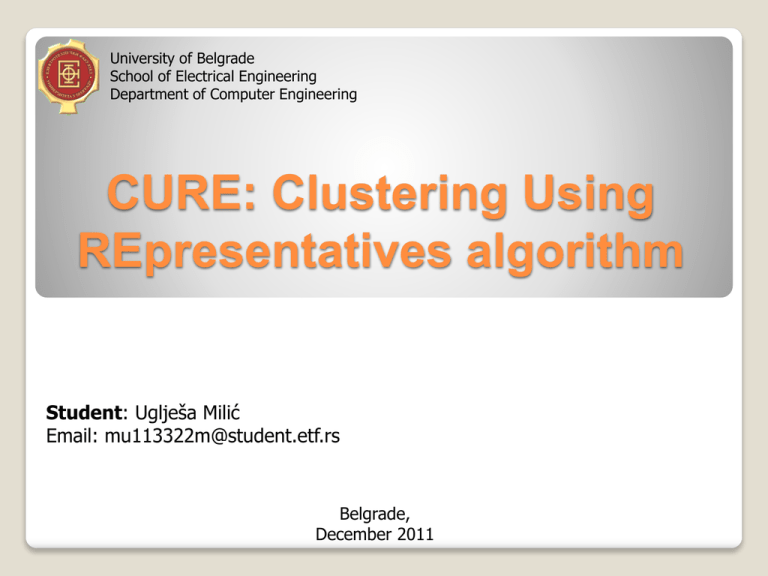
University of Belgrade School of Electrical Engineering Department of Computer Engineering CURE: Clustering Using REpresentatives algorithm Student: Uglješa Milić Email: mu113322m@student.etf.rs Belgrade, December 2011 Agenda Introduction - About clustering - Previous approaches - Things to improve CURE algorithm - Basic ideas - Step by step - Experimental results Conclusion Q&A 1/15 Introduction About clustering Classification of objects into different groups Those who uses partitioning or hierarchical techniques Partitioning - starts with one big cluster and downward step by step reaches the number of clusters we wanted Hierarchical - starts with single point cluster and upward step by step merge cluster until desired number is reached The second technique is used in this work 2/15 Introduction Previous approaches All-points approach Any point in the cluster is representative of the cluster dmin(Ca, Cb) = minimum( || pa,i – pb,j || ) where dmin stands for minimum distance between two points of a pair of clusters 3/15 Introduction Previous approaches Centroid-based approach Considers one point as representative of a cluster - centroid dmean(Ca, Cb) = || ma – mb || where dmean stands for a distance between two centroids 4/15 Introduction Things to improve Hierarchical models are typically fast and efficient As a result they are also popular Some disadvantages of traditional clustering algorithms: - favor clusters approximating spherical shapes - similar sizes - poor at handling outliers 5/15 CURE algorithm Basic ideas Introduce balance between centroid and all-points techniques Presents a hybrid of the two Pre-defined number of representative points Shrinking them by factor α 6/15 CURE algorithm Step by step For each cluster, c well scattered points within the cluster are chosen, and then shrinking them toward the mean of the cluster by a fraction α The distance between two clusters is then the distance between the closest pair of representative points from each cluster. The c representative points attempt to capture the physical shape and geometry of the cluster. Shrinking the scattered points toward the mean gets rid of surface abnormalities and decrease the effects of outliers. 7/15 CURE algorithm Step by step Choosing well ‘scattered points’ representative of the cluster’s shape allows more precision than a standard spheroid radius. Shrinking the sets, increases the distance from each cluster to any outlier (also eliminating the ‘chaining’ effect) 8/15 CURE algorithm Experimental results Experiment with data sets of two dimensions Consists of on big and two small circles and two ellipsoid shapes connected 9/15 CURE algorithm Experimental results Shrink Factor α: 0.2 – 0.7 is a good range of values for α 10/15 CURE algorithm Experimental results Number of representative points c: For smaller values of c, the quality of clustering suffered For values of c greater than 10, CURE always found right clusters 11/15 CURE algorithm Experimental results BIRCH cannot distinguish between the big and small clusters MST merges the two ellipsoids CURE successfully discovers the clusters 12/15 Conclusion Can detect cluster with non-spherical shape and wide variance in size using a set of representative points for each cluster Have a good execution time in presence of large database using random sampling and partitioning methods Works well when the database contains outliers 13/15 References Sudipto Guha, Rajeev Rastogi, Kyuseok Shim Cure: An Efficient Clustering Algorithm for Large Databases. InformationSystems, Volume 26, Number 1, March 2001 14/15 Q&A 15/15





